#PHOTO-ART-WEBER
Explore tagged Tumblr posts
Text
20241124 GROUND AEREA • OBERFLÄCHE•
©️ NORBERT WEBER PHOTOGRAPHY 20241124 PHOTO-ART-WEBER NORBERT WEBER GERMANY SMARTPHONE-PHOTOGRAPHY FLOWER-PHOTOGRAPHY PHOTOGRAPHY WEBER NORBERT ○#photoart #fotografie #monochrome #b&w#abstract #art #abstractart #creative #flower #japan #karate #budo #norbertweber #love #photo #germany #friendship #2024 #renbukan1981#abstract #photooftheday #photowebernorbert #photoweber #photoartweber …

View On WordPress
#2024#20241124#B&W#B&W PHOTOGRAPHY#BLACKANDWHITE#NORBERT WEBER#PHOTO-ART-WEBER#SMARTPHONE-PHOTOGRAPHY
2 notes
·
View notes
Text

ᴀʟʟᴇɴ ɢɪɴsʙᴇʀɢ (left) - East Village, New York City, 1992 - by Bruce Weber.
#allen ginsberg#beat generation#1990s#lgbt#art history#poetry#academia#people#bruce weber#literature#20th century#photos#queer#guys#howl#90s#nyc
31 notes
·
View notes
Text

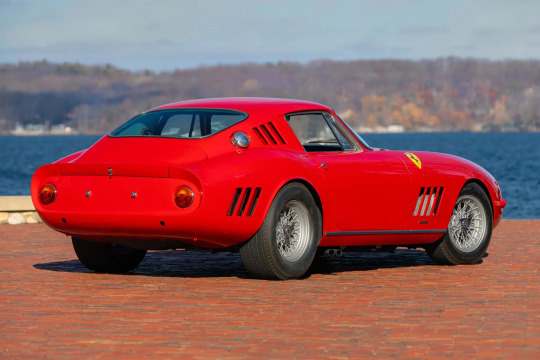


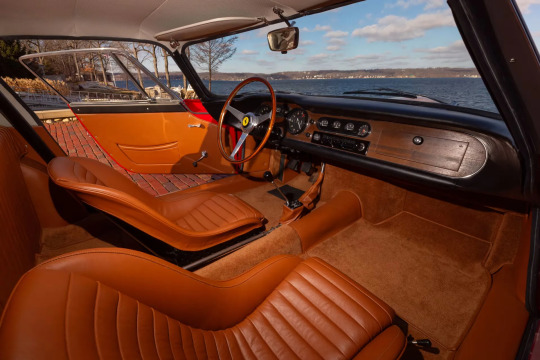
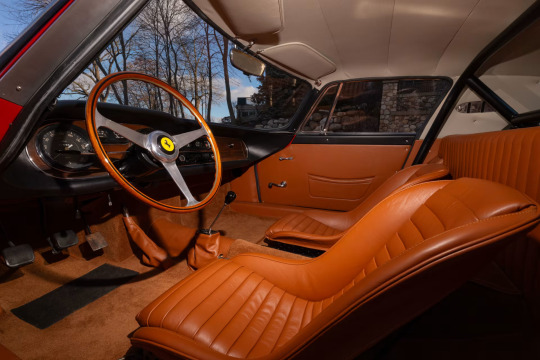
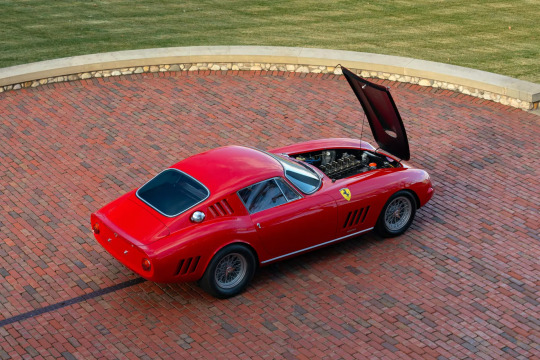


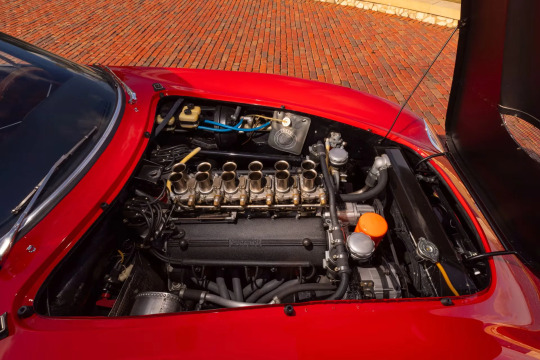

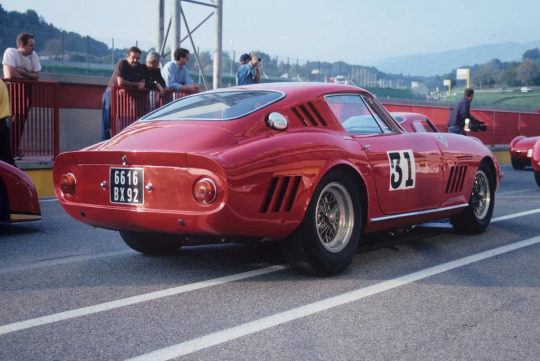

1964 Ferrari 275 GTB/C Speciale bearing chassis no. 6701,
Just three of the 275 GTB/C Speciales were built, between 1964 and early '65.
Chassis no. 6701 is the only example that competed, including running at the 1965 24 Hours of Le Mans where it finished first in the GT class and third overall. In a race where mid-engined cars became increasingly dominant, that finish remains the best by a front-engined car to this day.
Like the more famous 250 GTO, the 275 GTB/C Speciale is both a work of art and a feat of engineering. Its tube-frame chassis is clothed in aluminum panels shaped by Scaglietti. The aluminum panels were about half as thick as those of the road cars, making them prone to denting. The Speciales also used thinner chassis tubes to reduce weight. All told, they weighed as much as 300 pounds less than the road cars.
They also packed more power. Under the long hood sits a 3.3-liter V-12 with six Weber carburetors and a 315-hp output, 69 horses more than the road-going 275 GTB. The car also features double-wishbone independent suspension at all four corners, and four-wheel disc brakes.
Photo credit: Mecum
#art#design#luxury cars#luxury lifestyle#sportcars#sportcar#supercars#supercar#vintagecar#vintagecars#ferrari#mecum#ferrari 250 gtb#sport cars#luxurycars#luxurylifestyle#luxurycar#1964
215 notes
·
View notes
Text

⬆️ Fan-art-photo-faffing for Department Q; Carl Mørck (played by MG) at a Greasy Spoon - Part 3; all made up/just for fun whilst we patiently await the show
Let’s call this ‘Variations on an MG-string’ - Mørck’s mood from cool to warm to abso-bloody-lutely (re: Mona/Rachel, of course). This series of edits imagines a meeting between Carl and Rachel at a beachfront cafe after a windswept walk. Perhaps it’s Portobello Beach. Perhaps it’s a date. Or could turn into a date. Who knows.

📷 ⬆️ Original photos/screenshots by Uli Weber, @asgoodeasgold and from Downton BTS 📷 Edited using Procreate 🖌️🎨

Hurry up Netflix and give us some info so I can stop overthinking it! 😂 Can’t wait!
28 notes
·
View notes
Text

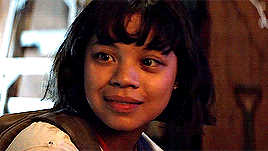
( eva noblezada, demi woman, she/they ) here lies the story of ANGELA WEBER, the TWENTY-SEVEN year old HUMAN. if you’ve seen them around forks for the past TWENTY-THREE YEARS don’t be alarmed, they’re only here because FORKS IS HOME. they’ve gathered quite the reputation for being PERCEPTIVE and RESERVED. that’s probably due to them being a MULTIMEDIA JOURNALIST.
☾ — general tag. aesthetics. musings. vanity. threads. starters. tasks. events. connections. spotify. pinterest.

i. statistics
☾ — general
full name . angela weber nickname . ang, angie age & dob . 27 & march 12th 1997 ( pisces ) gender & pronouns . demi woman + she/they species . human affiliation . unaware / neutral orientation . biromantic & demisexual hometown . forks, washington, usa current residence . forks, washington, usa occupation . multimedia journalist for the local news station education . ba in journalism from washington state languages . english ( fluent ), spanish ( fluent ), & tagalog ( fluent ) pets . an irritable, rescue turned house cat named zephyr themes . un millón by the marías, fragile by laufey, & art class by beabadoobee aesthetics . undeveloped rolls of camera film tucked away in an old shoebox, never missing an episode of jeopardy, the inherent strength of kindness, countless candid photos of your loved ones, the small — yet sturdy — shoulders of an older sister, beams of sunlight breaking through storm clouds, nightly diary debriefs, & the mundanity of humanity
☾ — personality
positive traits . perceptive, empathetic, dependable, adroit, & conscientious negative traits . reserved, diffident, anxious, captious, & taciturn tropes & labels . the wallflower, the dutiful older sister, & the curious mbti . infp ( the mediator ) moral alignment . neutral good hobbies . film photography, crocheting, reading, journaling / scrapbooking / crafting, annotating books, collecting records, & thrifting likes . true crime podcasts, rainy nights listening to her record player, cryptid conspiracy blogs, decaf coffee, stocking up on enough autumn-scented candles to last her the entire year, houseplants, leaving online book reviews, mobile scrabble games, audiobooks, matcha lattes, knit sweaters, & reruns of gilmore girls dislikes . long car rides ( gets motion sickness very easily ), feeling cold, misplacing her glasses, waking up late ( it throws off the entire rhythm of her day ), script revisions, casual cruelty, riding bikes, crowded rooms, driving at night, moments when she's unsure of what to say, overthinking, anything black licorice flavored, & finicky sd cards quirks . angela has been a vegetarian since she was seven, she enjoys naming her various houseplants ( while she doesn't actually believe it to be conducive to their ability to thrive, she can't deny they just look a little happier in the end when they're given a name ), angie is very particular about her stationary + has a specific brand off ballpoint bens she gravitates towards, & she religiously uses her notes app ( especially when she's in the field ) pet peeves . a messy desk space, poorly maintained camera equipment, unvetted sources, smudges on the lenses of her glasses, & being spoken over fears . heights ( more accurately the fear of falling ), letting her little brothers down, being unheard, bee stings, & forgetting the faces of her loved ones aspirations . angela wants to become a television anchor; but, until she gathers the courage experience, angie is content working behind the camera at the local news station.
☾ — physical
faceclaim . eva noblezada height . 5'3" build . slight eye color . dark brown hair color & style . dark brown, almost black, cut into a wavy bob with blunt bangs piercings . three in each lobe tattoos . none at the moment scars . faint, childhood scars on her knees from a disastrous attempt at learning how to ride a bike & a healed nose piercing angela got in an uncharacteristic moment of teenage rebellion ( which she immediately took out ) distinguishing features . gentle eyes, a warm smile, & a birthmark on her left shoulder blade
☾ — relationships
parents. tomas weber ( father ) & ximena weber ( mother ) siblings. joshua weber & isaac weber ( younger twin brothers ) children. none extended family. none atm, but open to cousins, aunts, uncles, & the like! could be biologically related or adopted into the family! romantic status. single
☾ — misc
vices . envy & delicacy virtues . kindness & wisdom habits . is an early bird, always watches the evening news while she's making dinner, & can not fall asleep to silence diagnosis . mild asthma, extremely poor eyesight ( wears both glasses & contacts, but prefers the former ), & a severe allergy to bees dominant hand . left
ii. biography
tw: brief mentions of religion / growing up religious & compulsory heterosexuality.
while i'm mostly sticking with angela's canon ( which you can find here ), you will find the few changes / alterations i will be making below!
#twilight.intro#𝐚𝐧𝐠𝐞𝐥𝐚 𝐰𝐞𝐛𝐞𝐫 ; tenderness is not a weakness#got her main stats up & will add her backstory once i am off work!!
2 notes
·
View notes
Text
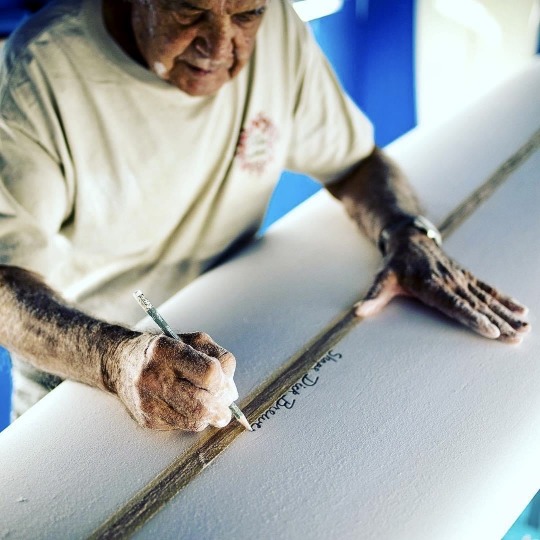
"I started shaping on my own. When I moved to Hawaii in 1961, I opened Surfboards Hawaii in Haleiwa. And I was selling Dewey Weber boards and then I started shaping boards. I shaped a board for Buffalo Keaulana. At this time in history it would be called a semi gun. It had dropped rails in the tail, a pulled in longboard kinda look; pulled in nose and a pulled in tail. That became kinda state of the art for a while. In 1964, I lost control of Surfboards Hawaii by not having enough legal assistance, so I went to work for Hobie, did the Dick Brewer Hobie model. Jeff Hakman won the first Duke at Sunset on one of my Hobie models. And I made Eddie Aikau guns that he rode through his career. Eddie’s red Hobie was a Brewer." - Dick Brewer
Sending love and light to the master today on his birthday, wherever in the cosmos he may be.
Photo: Dick Brewer Surfboards
12 notes
·
View notes
Text
20241114 SMARTPHONE-PHOTOGRAPHY B&W

View On WordPress
2 notes
·
View notes
Text
Fisher Building, Chicago
343 South Dearborn Street
Completed 1896; addition 1907
Charles Atwood, D.H. Burnham & Co. architects
1907 addition, Peter J. Weber, architect
2001 restoration and adaptive reuse, Pappageorge Haymes, supervising architects
by Roger Jones, August 2023

Fisher Building, photo by Roger Jones
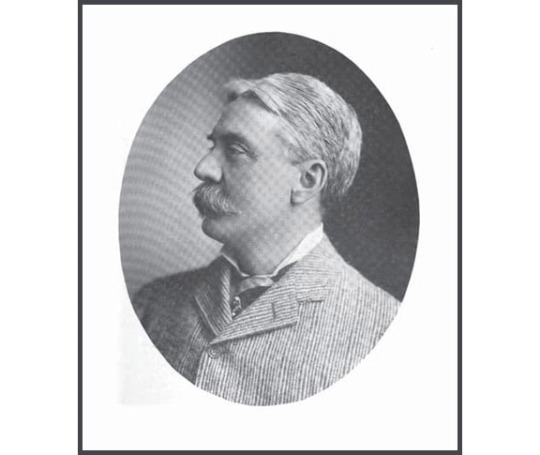
Lucius Fisher (1843-1916). He was a Chicago, Illinois paper company magnate and architect. In 1895, he commissioned Daniel Burnham and Company to build the 20 story, 275 foot tall Fisher Building in the Chicago Loop.
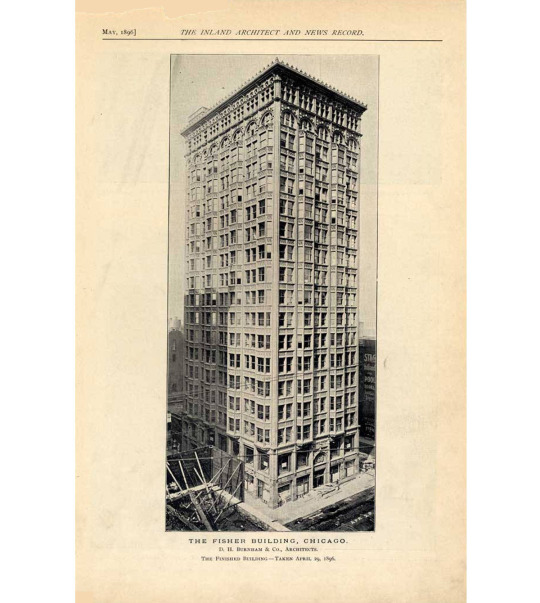
Fisher Building, Chicago, taken April 29, 1896. From The Inland Architect and News Record, May 1896. [Link to full article PDF here]
The writer of the 1896 article described the building thus:
But here, for what we believe to be the first time in human experience, one of the highest commercial buildings in the world has been erected almost without any bricks. It fronts on three streets, and on the remaining side adjoins other property. The fronts are covered with cellular terra cotta on the outside, not in imitation of a wall, but following upward the steel supporting members, and closing in the transoms between the windows, leaving two-thirds of the exterior to be enclosed by glass… Only two bricklayers were employed at any time in this part of the work.
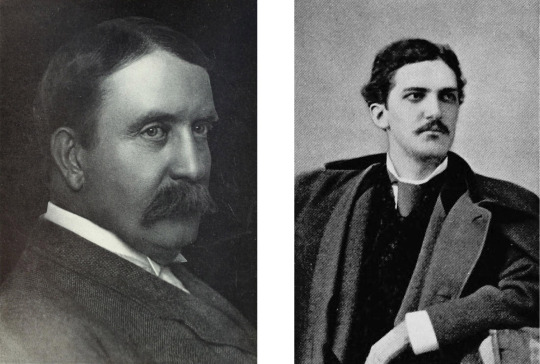
(Left) Daniel H. Burnham (1846-1912)
(Right) Charles B. Atwood (1849-1895)
The Fisher Building, 343 South Dearborn Street in the Chicago Loop, was commissioned by paper magnate Lucius Fisher. The original 18-story building was completed in 1896 by D.H. Burnham & Company; the architect was Charles B. Atwood, who died before the building's completion. An addition was later added in 1907.
Some facts about the building, from the Emporis site:
The original wing was only the second building in Chicago to reach 18 stories (after the Masonic Temple), and is the oldest still standing at that height.
Because of the building's great height for its time, the usual spread foundations were supplemented with piles underneath them to support the added weight.
The second floor was originally a banking room, and has especially large windows compared to the floors above it.
To enhance the facade's vertical emphasis, most of the ornamentation is placed on its horizontal members, reducing the banding effect that would occur if they were blank.
The Gothic ornament is in the 15th century style of Bruges and Rouen.
Declaring the structure a Chicago Landmark in 1978, the Landmarks Division noted:
Cladding this early skyscraper with Gothic-inspired, terra-cotta tracery was not a casual stylistic choice. Its designers looked for inspiration to the early Gothic cathedrals of Europe, which shared common characteristics of tallness and often having more glass than masonry. Cut glass door panel Eagles and mythical beasts decorate the upper stories, and aquatic creatures and seashells--a visual pun on the name of the building's original owner, Lucius G. Fisher--are found at the base. A later addition to the north is largely a repetition of the original design, except for the absence of bay windows.
Early postcard views of the building


Archival photos
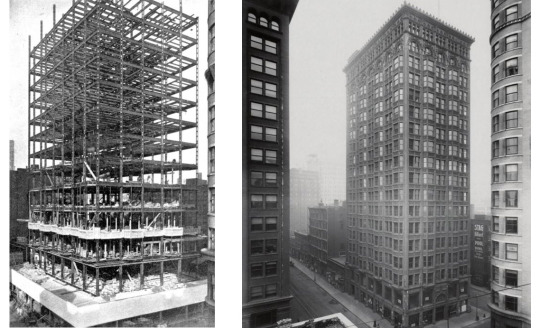
Fisher Building under construction (left) and on completion (right)
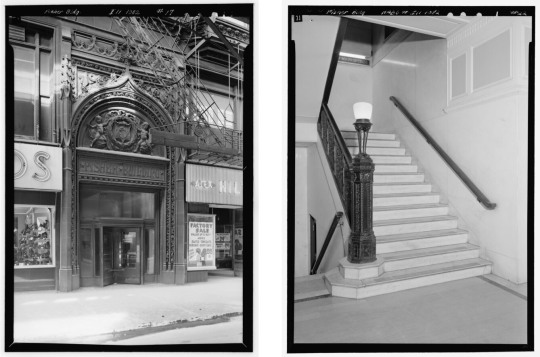
Van Buren (main) entrance; Lobby stairs
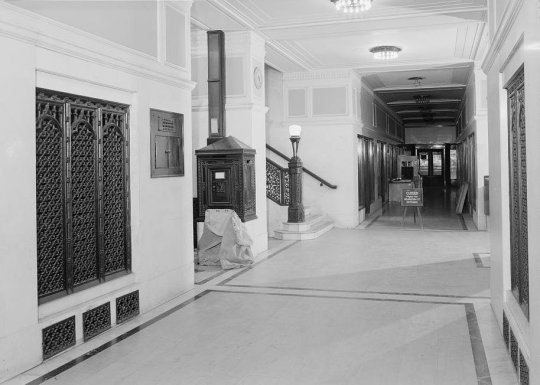
Entrance hall

First story entrance corridor in 1896

Original elevator cage
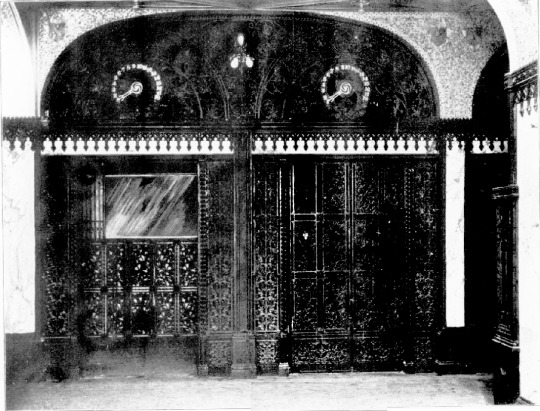
Original elevators
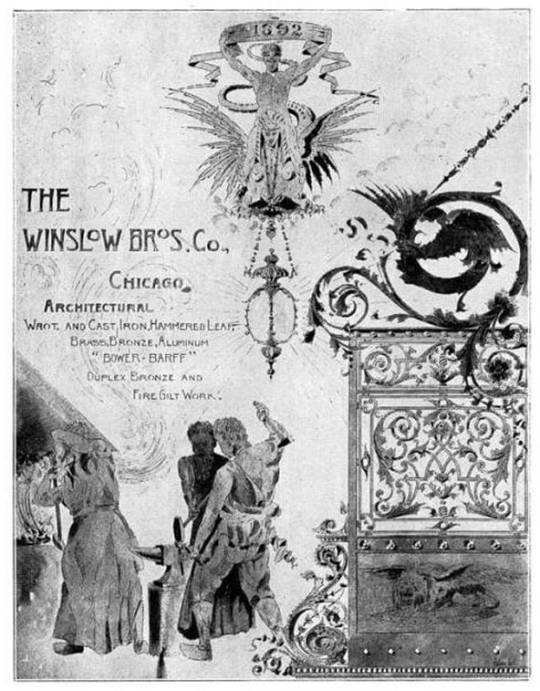
Advertisement for Winslow Brothers, who executed the metalwork for the Fisher Building

Late 19th Century Cast Iron Elevator Lobby Door from The Fisher Building, listed for sale on 1stdibs.com. Compare to original elevators photo above.
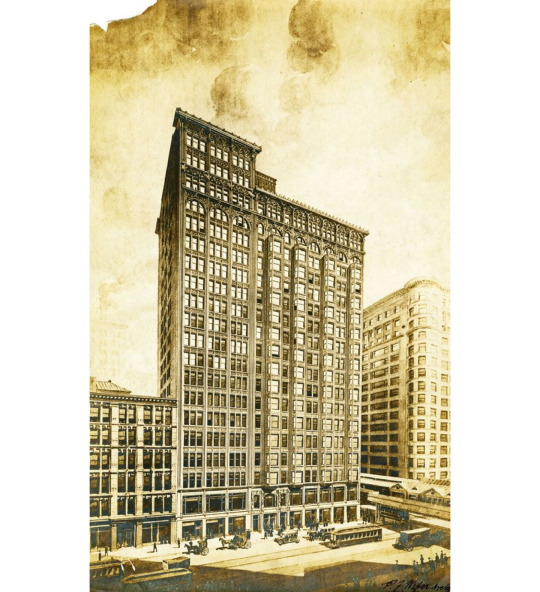
Rendering of the 1907 addition, Peter J. Weber, architect
Other illustrations

Upper elevator grille. Art Institute of Chicago
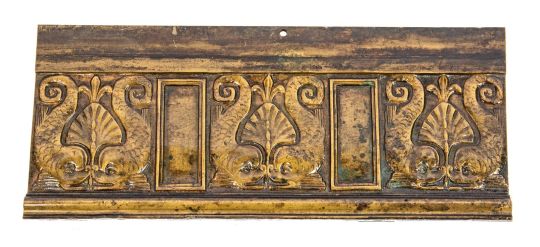
Elevator frieze panel. Urban Remains, Chicago.
Architectural Description from the 1965 Historic American Buildings Survey Report [Link to PDF of report here]
PART 11 ARCHITECTURAL INFORMATION A. General Statement: I. Architectural character: The Fisher Building is a large office 'building designed by the firm of D. H. Burnham Co. in 1895. It has been cited by the Chicago Landmarks Commission and it is indicative of the level of achievement in skyscraper design attained by the architects of the Chicago School. The steel cage structure is sheathed in a curtain wall of decorative terra cotta and glass, providing ample space and light for the occupants and making it possible for the building to be erected relatively quickly and economically. B. Description of Exterior: 1. Over-all dimensions: Rectangular 70'-6" (five-bay south front) x 150' 0" (eleven-bay west front), including addition. Eighteen stories. 2. Wall construction, finish and color: The original block of the building had tripartite projecting bays alternating with planed surfaces. Bays end at sill of 17th story. Arches of varying width span the window openings of the 17th floor. The original salmon terra cotta finish is now coated with a black patina from the soot and dirt of the city. 3. Openings: a. Doorways and doors: The arched entrance on VanBuren Street, originally the principal entrance, is intact; that at 343 South Dearborn Street has received a 20th century I 'modernization"--a polished granite portal with plate glass and aluminum doors. The original doors from the vestibule inside are decorated with an ornamental fish cut in the glass panels. b.. Windows: Mostly one-over-one light, double-hung windows; those of the original building are grouped three to a bay window, two between; in the north addition, the windows are placed in a plane in groups of three. At the 17th floor the lights are gathered under wide arches; at the 18th they are again in threes with transoms above. The first floor display windows have been disfigured by a variety of signs, aluminum panels, and other attempts at commercial modernization. ...General setting and orientation: The buiIding occupies the southern portion of a narrow block at the south end of the Loop. Its neighbors are the Old Colony Building (HABS No. ILL-1053) to the south and the Monadnock BuiIding (HABS NO. ILL-1027) to the west. The buiIding fronts the sidewalk line on three sides and is adjacent to the elevated on VanBuren Street. Prepared by Larry J. Homolka, Historian and Assistant Supervisor National Park Service August, 1965.
My Photos:
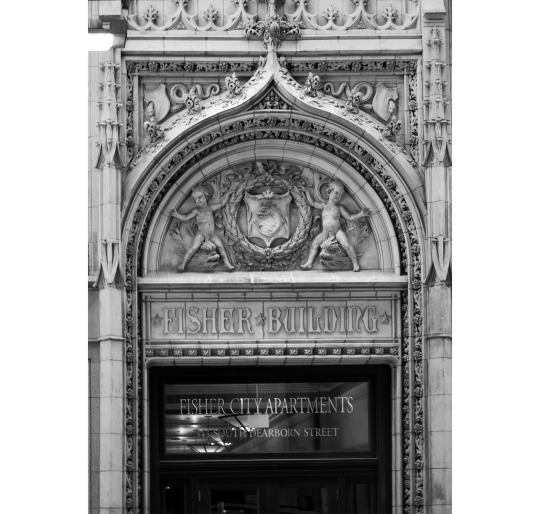
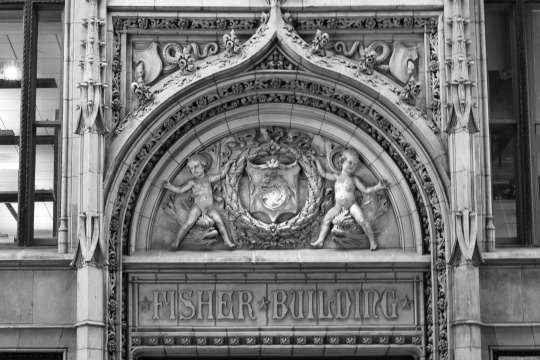
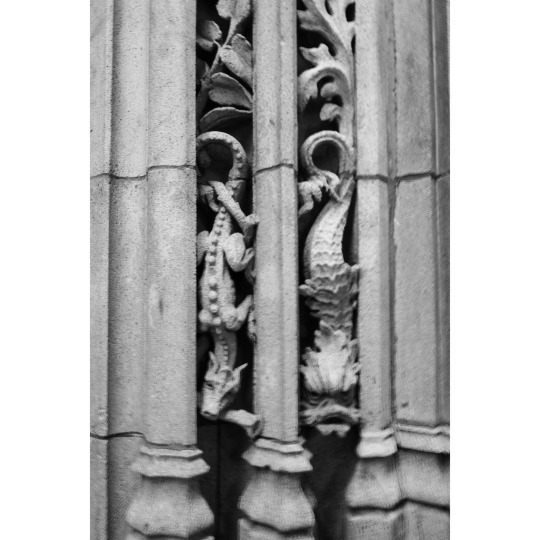
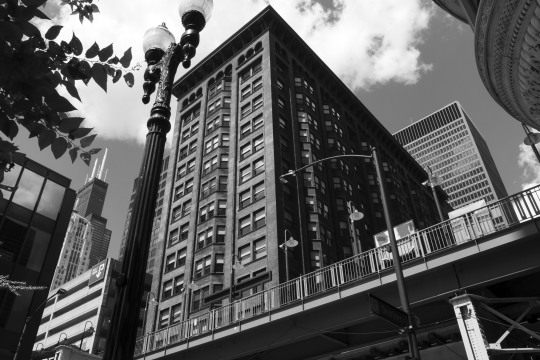


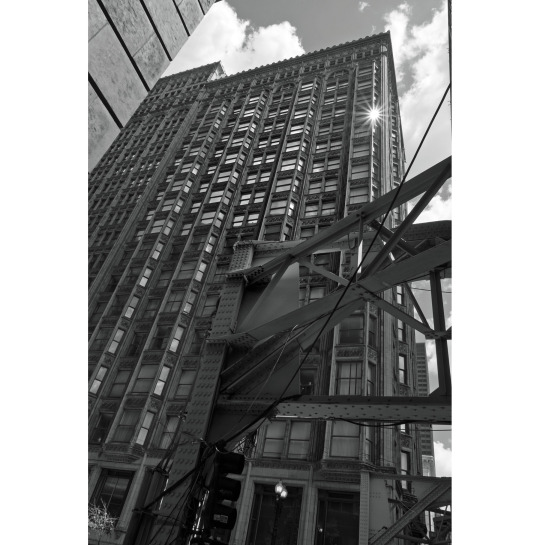
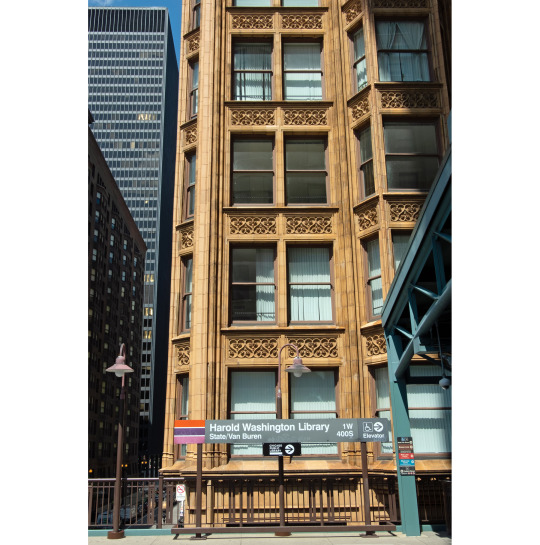
Links / Sources:
Architecturefarm - old chicago skyscraper of the week–Fisher Building
Chicagology
chicago.designslinger
Emporis Buildings on the Wayback Machine – Fisher Building Chicago
HABS Report 1965
Historic Structures
cityclubapartments.com - Daniel H. Burnham's Fisher Building interior lobby original elevator doors executed by Winslow Brothers
Chicago Landmarks - Fisher Building
Researchgate
Urban Remains - Fisher Building
Urban Remains - Fisher artifacts
Wikimedia commons
#Fisher#Fisher Building#architecture#Chicago#DH Burnham#Charles B. Atwood#skyscraper#terra cotta#landmark#Peter J. Weber
5 notes
·
View notes
Text
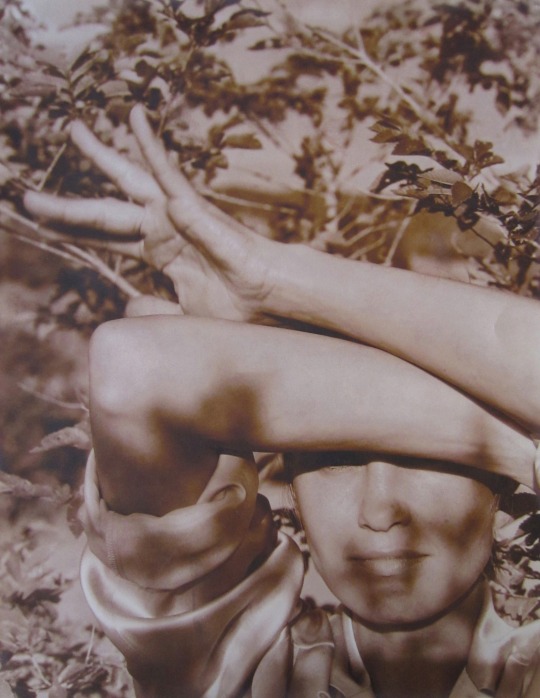
... lights and shadows ...
Jessica Lange for Vanity Fair, 1984
📸 Bruce Weber
16 notes
·
View notes
Text
HUgE June 2011
Etoile Dancers' Photos by SATOSHI SAIKUSA
The dancer's body, lighting, music, stage design, miso scenography.
The chemical reaction that these create on stage in an instant
It's nearly impossible to capture on camera.
From this dilemma
Photographer Satoshi Saikusa found the answer: portraits of Etoiles.
When still, their bodies give off the scent of animals, but as soon as they begin to dance they begin to delicately tell a tale.

Patrick Dupond/Paris National Opera (1987)
At the age of 21, Patrick Dupont became the youngest dancer in the history of the Paris Opera Ballet (at the time). In 1989, he also served as the artistic director of the Paris Opera.

A day with the Ballet Company of the Teatro alla Scala (2006)
The Milan La Scala Ballet is known worldwide as one of the oldest ballet companies in Europe. The photo above shows a model of the stage set. Satoshi Saikusa became fascinated with ballet through his interest in stage equipment.
A day with the Ballet Company of the Teatro alla Scala (2006)
The Milan La Scala Ballet Company is made up of the best ballet dancers from all over the world. Only the most outstanding among them advance to the ranks of principal and étoile. For over 200 years, they have been creating the world's finest performing arts.

Blanca Li (2002)
Blanca Lee is a Spanish dancer and choreographer. Her methods of expression are diverse, and she is also famous for choreographing the music video for Daft Punk's "Around the World."


Roberto Bolle (2010)
Roberto Bolle is a dancer who has been an étoile at La Scala Ballet since 2003.
In addition to her technique and expressiveness, her beauty has captivated many ballet fans.
Photographer Bruce Weber is one of them, and in 2009 he published a book of his photographs.

A day with the Ballet Company of the Teatro alla Scala (2006)
The Milan La Scala Ballet Company not only produces classical works, but also many contemporary works in collaboration with famous choreographers.
#my scans#photography#ballet#choreography#roberto bolle#dancer#bruce weber#daft punk#performing art#paris opera ballet
1 note
·
View note
Text

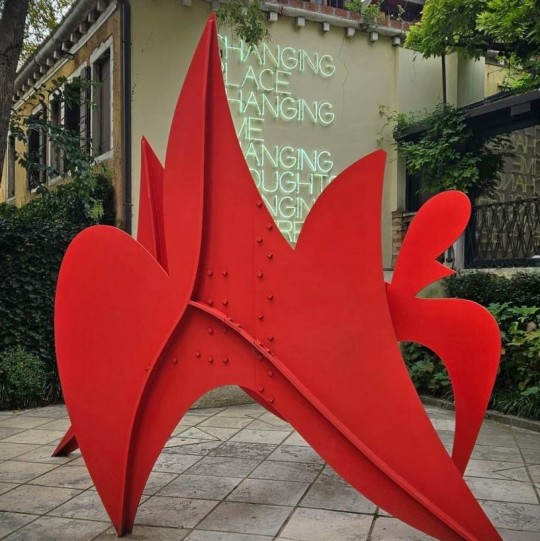

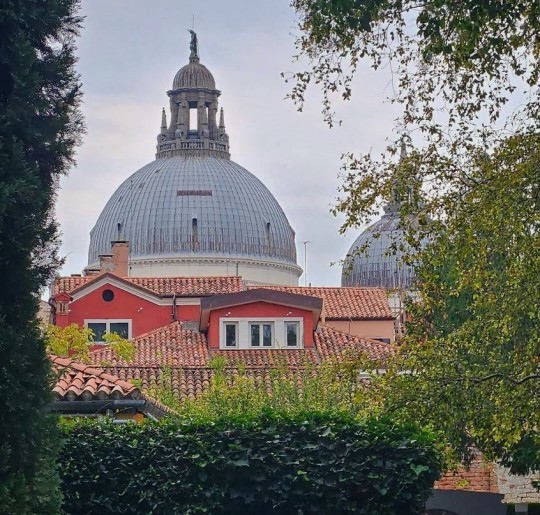
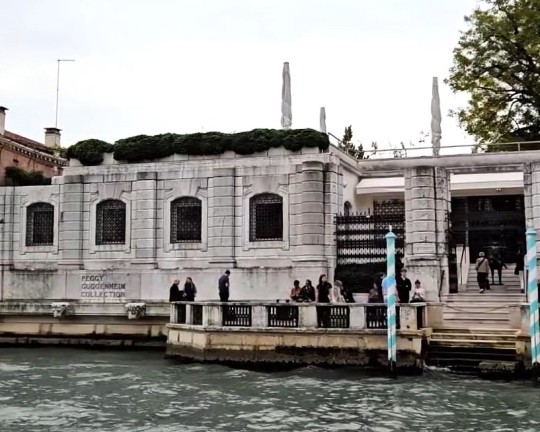

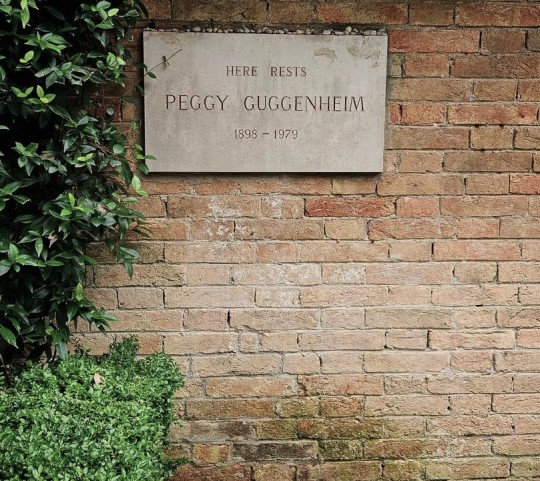
seen at Peggy's place (October 2024)
photos: optikes
Maurizio Nannucci was born in Florence on April 20, 1939. He studied at Florence’s Fine Art Academy and in Berlin before working for many years with experimental theater groups as a set designer. During the first half of the 1960s, he consolidated the basic elements of what would become his visual language by exploring the relationship between art, language, and image, and by creating the first Dattilogrammi, in which words reclaim their strength as symbols. At the same time he was in contact with Fluxus artists, developed an interest for visual poetry, and collaborated with the studio “S 2F M” (Studio di Fonologia Musicale, Florence) to produce electronic music. Nannucci focused on using voices and words to produce sound installations.
In 1967, during his first solo exhibition at the Centro Arte Viva, Trieste, he presented his first neon light texts, thus emphasizing the temporary quality of writing and not the material quality of objects. In 1968 he founded the Exempla publishing house in Florence and Zona Archives Edizioni, both of which published books and catalogues on artists like John Armleder, Robert Filliou, Ian Hamilton Finlay, James Lee Byars, and Sol LeWitt. Nannucci believes that publications and multiples are themselves manifestations of a type of artistic practice that considers art a mental process, one that can be applied to the mass production of everyday objects in order to unify divergent threads in art. The art object may lose its uniqueness, but it gains presence and new freedom.
During the 1990s the artist renewed his interest in the relationship between works of art, architecture, and urban landscape by collaborating with the architects Auer & Weber, Mario Botta, Massimiliano Fuksas, and Renzo Piano. Some of his permanent installations can be seen at the Auditiorium of the Parco Della Musica and Fiumicino airport, both in Rome, and at the Bibliothek des Deutschen Bundestages, Berlin. Nannucci has been a featured artist at the Venice Biennale several times and has participated in Documenta, Kassel, and the São Paulo, Sydney, Istanbul, and Valencia biennials.
Alexander Calder was born July 22, 1898, in Lawnton, Pennsylvania. In 1919, he received an engineering degree from Stevens Institute of Technology, Hoboken. Calder attended the Art Students League, New York, from 1923 to 1925, studying briefly with Boardman Robinson and John Sloan. As a freelance artist for the National Police Gazette in 1925, he spent two weeks sketching at the circus and developed a particular fascination for the subject. He also made his first wire sculpture in 1925, and the following year he made several constructions of animals and figures with wire and wood.
Calder’s first exhibition of paintings took place in 1926 at the Artist’s Gallery, New York. Later that year, he went to Paris and attended the Académie de la Grande Chaumière. In Paris, he met Stanley William Hayter, exhibited at the 1926 Salon des Indépendants, and began giving performances of his miniature circus. The first show of his wire animals and caricature portraits was held at the Weyhe Gallery, New York, in 1928. That same year, he met Joan Miró, who became his lifelong friend. Subsequently, Calder divided his time between France and the United States. In 1929, the Galerie Billiet gave him his first solo show in Paris. He met Frederick Kiesler, Fernand Léger, and Theo van Doesburg and visited Piet Mondrian’s studio in 1930. Calder began to experiment with abstract sculpture and in 1931 and 1932 introduced moving parts into his works. These moving sculptures were called “mobiles,” while his stationary constructions were to be named “stabiles.”
He exhibited with the Abstraction-Création group in Paris in 1933. In 1943, the Museum of Modern Art, New York, gave him a retrospective. During the 1950s, Calder traveled widely and executed Towers (wall mobiles) and Gongs (sound mobiles). He won the Grand Prize for Sculpture at the 1952 Venice Biennale. Late in the decade, the artist worked extensively with gouache. During this period, he executed numerous major public commissions. In 1964–65, the Solomon R. Guggenheim Museum, New York, presented a Calder retrospective. He began the Totems in 1966 and the Animobiles in 1971, both of which are variations on the standing mobile. A Calder exhibition was held at the Whitney Museum of American Art, New York, in 1976. Alexander Calder died November 11, 1976, in New York.
guggenheim-venice.it
0 notes
Text

Three's a Crowd . 15 November 2024 . The Visit . Max Weber . 1919
The Visit . Max Weber . American Art Max Weber was born into an Orthodox Jewish family in Bialystok, in modern Poland. In 1891 the Webers immigrated to Brooklyn, where Max studied art at the Pratt Institute. Between 1905 and 1908, he was in Paris, where he became one of the first Americans to fully absorb Cubism. The Visit is a Cubist domestic scene, probably depicting a courtship or a Shabbat (Sabbath) gathering—the men’s clothing and hats are typical of Jewish Orthodox dress. Weber began painting nostalgic scenes of Jewish domestic life in 1918, possibly in response to the pogroms that were then decimating entire Jewish populations in his native eastern Europe. ARTIST: Max Weber, American, born Russia, 1881–1961 MEDIUM: Oil on canvas DATES: 1919 DIMENSIONS: 40 x 30 in. (101.6 x 76.2 cm) frame: 47 3/4 x 38 1/4 x 4 in. (121.3 x 97.2 x 10.2 cm) (show scale) SIGNATURE: Signed lower right: "Max Weber 1919" COLLECTIONS: American Art ACCESSION NUMBER: 1992.11.30 CREDIT LINE: Bequest of Edith and Milton Lowenthal EXHIBITIONS: Modernist Art from the Edith and Milton Lowenthal Collection MUSEUM LOCATION: This item is not on view CAPTION: Max Weber (American, born Russia, 1881–1961). The Visit, 1919. Oil on canvas, 40 x 30 in. (101.6 x 76.2 cm). Brooklyn Museum, Bequest of Edith and Milton Lowenthal, 1992.11.30 (Photo: Brooklyn Museum, 1992.11.30_SL1.jpg) IMAGE overall, 1992.11.30_SL1.jpg. Brooklyn Museum photograph RIGHTS STATEMENT: No known copyright restrictions
0 notes
Text
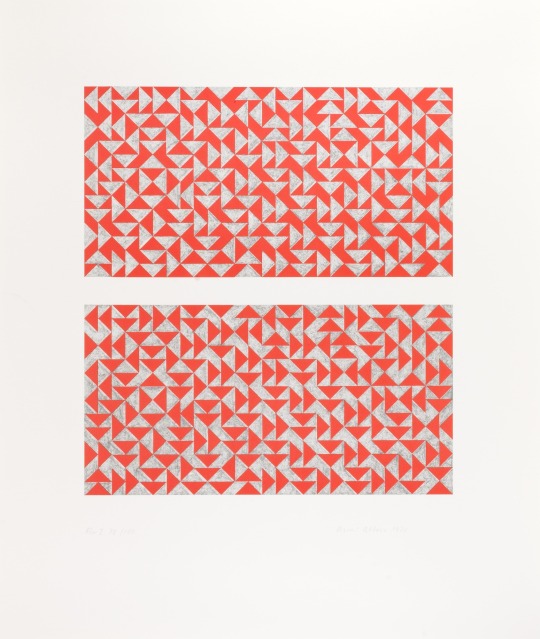
Anni Albers, Fox I, 1972, color photo-offset lithograph on paper, image: 14 7⁄8x 13 1⁄2 in. (37.7 x 34.2 cm), Smithsonian American Art Museum, Gift of Katherine and Nicholas Weber in honor of the artist, 1984.154.1, © 1972, Anni Albers
1 note
·
View note
Text

Art by Australian Danielle Weber (@daniellesartwork) in Melbourne, Australia (2023) #danielleweber #streetart #lamolinastreetart | photo by @ooshanapa via mysl.nl/JSfnC
0 notes
Text
0 notes
Text
2250118 FLOWER-PHOTOGRAPHY
©️ NORBERT WEBER Christian Friedrich Hebbel (1813 – 1863)WinterlandschaftUnendlich dehnt sie sich, die weiße Fläche,bis auf den letzten Hauch von Leben leer;die muntern Pulse stocken längst, die Bäche,es regt sich selbst der kalte Wind nicht mehr.Der Rabe dort, im Berg von Schnee und Eise,erstarrt und hungrig, gräbt sich tief hinab,und gräbt er nicht heraus den Bissen Speise,so gräbt er, glaub’…

View On WordPress
0 notes